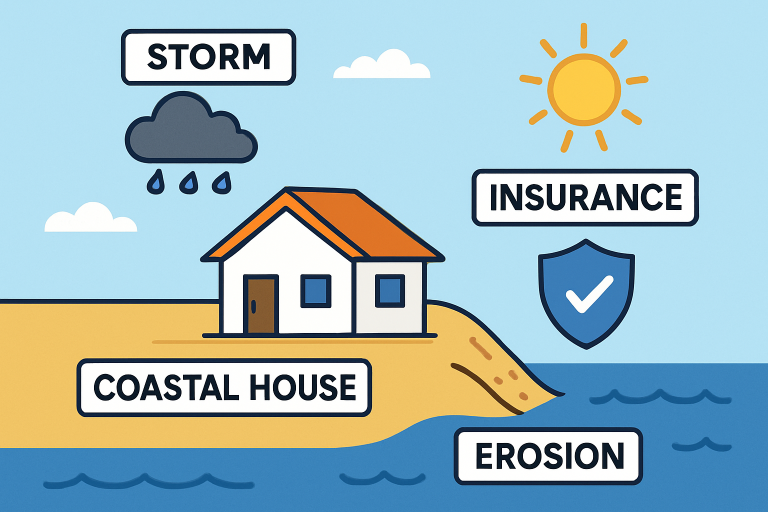Key Takeaways
- Before purchasing, identify and assess environmental risks, such as erosion and flooding.
- Review local regulations and zoning requirements to avoid legal issues and delays.
- Plan for higher ongoing costs, including repairs and insurance premiums linked to the coastal environment.
- Engage seasoned local experts who can offer guidance through every transaction stage.
Introduction
Investing in coastal properties can be a dream come true, offering breathtaking views, direct access to the ocean, and a relaxing lifestyle. However, purchasing real estate near the coast has unique complexities and risks. Before taking the plunge, it's vital to understand what sets these properties apart and what steps you should take to protect your investment. Whether searching for a luxury vacation spot or a permanent residence, exploring Playa Flamingo homes for sale or other coastal markets, the proper knowledge can help you choose wisely.
From heightened environmental challenges to evolving legal landscapes, buyers face hurdles not encountered with inland properties. Many desirable coastal homes are in areas protected by environmental regulations or exposed to the elements, requiring extra diligence throughout the purchasing process. Buyers can avoid costly surprises and thoroughly enjoy their coastal investment by understanding these unique aspects and planning accordingly.
Assess Environmental Risks
Coastal real estate is often exposed to forces like erosion, flooding, and storm surges that may threaten its value and integrity. Conducting professional risk assessments is essential. Soil tests, site surveys, and detailed building inspections can identify factors such as saltwater intrusion or soil instability risk, which could jeopardize foundations. Erosion can accelerate rapidly after major storms, leading to significant land loss for beachfront properties. For more on this risk, consult the insights provided by the National Oceanic and Atmospheric Administration.
Understand Local Regulations
The beauty of the coast often comes with strict regulatory oversight. Local and national governments frequently impose zoning restrictions and building codes to protect natural resources and ensure public safety. For example, states like California and Florida have comprehensive rules to manage coastal development, including limits on the size and location of new structures, to maintain the ecological balance. Failure to comply with these laws can lead to costly fines, halted construction, or even forced demolition. It’s vital to consult with local authorities and legal experts thoroughly before making any commitments. For an overview, the New York Times Real Estate Guide offers additional context on regional differences in property law.
Budget for Maintenance and Insurance
The charm of living by the sea comes at a price. Salt air and constant humidity can cause metal fixtures to rust, wooden structures to rot faster, and paint to peel prematurely. Natural disasters, such as hurricanes and floods, also pose a greater threat than they do inland. As a result, buyers should expect higher routine maintenance costs and often significantly higher insurance premiums, especially for flood and hurricane coverage. These expenses should be included in the initial budgeting for any coastal investment to prevent unpleasant financial surprises.

Work with Local Experts
Working with professionals who know the coastal property market is one of the best ways to safeguard your investment. Local real estate agents, legal advisors, inspectors, and contractors are more familiar with regional risks, laws, and best practices than outsiders. They can pinpoint safe and compliant homes, recommend trusted service providers, and share nuanced insights into trends that may affect long-term value.
Evaluate Accessibility and Infrastructure
Buyers sometimes overlook the accessibility of coastal properties, especially in more remote or seasonal locations. During storms or periods of heavy rain, certain areas may become unreachable, and some neighborhoods face periodic water shortages or issues with brackish drinking water due to rising sea levels. Prospective buyers should investigate year-round accessibility and basic infrastructure like roads, water, and electricity reliability, which can be less predictable than in urban settings.
Conduct Thorough Property Inspections
Comprehensive inspections by professionals versed in coastal challenges are essential before finalizing a purchase. Qualified inspectors can check for hidden damage such as saltwater corrosion in metal reinforcements, moisture behind walls, compromised waterproofing, and weakened structures exposed to high winds or tides. Inspecting protective features like seawalls, berms, or dunes is essential to ensure they are structurally sound and compliant with local guidelines.
Consider Long-Term Investment Potential
While coastal property values have historically shown strong appreciation due to high demand and limited supply, not every region or neighborhood will experience consistent growth. Research local trends, track recent sales, and analyze the area’s economic outlook to gauge potential for returns or rental income. Waterfront properties in high-demand regions often retain value even when markets soften, but a reliance on tourism or the short-term rental market can introduce volatility.
Conclusion
Buying property in a coastal region is an exciting venture that requires extra diligence, planning, and expert guidance. By assessing environmental risks, understanding regulations, factoring in higher costs, and relying on seasoned professionals, buyers can ensure their new home or investment delivers value and peace of mind for years.



No comments:
Post a Comment
I love reading and responding to comments but in order to get my reply you must ensure you are NOT a no-reply blogger. If you are, here are some quick steps to change that!
1. Go to the home page of your Blogger account.
2. Select the drop down beside your name on the top right corner and choose Blogger Profile.
3. Select Edit Profile at the top right.
4. Select the Show My Email Address box.
5. Hit Save Profile.